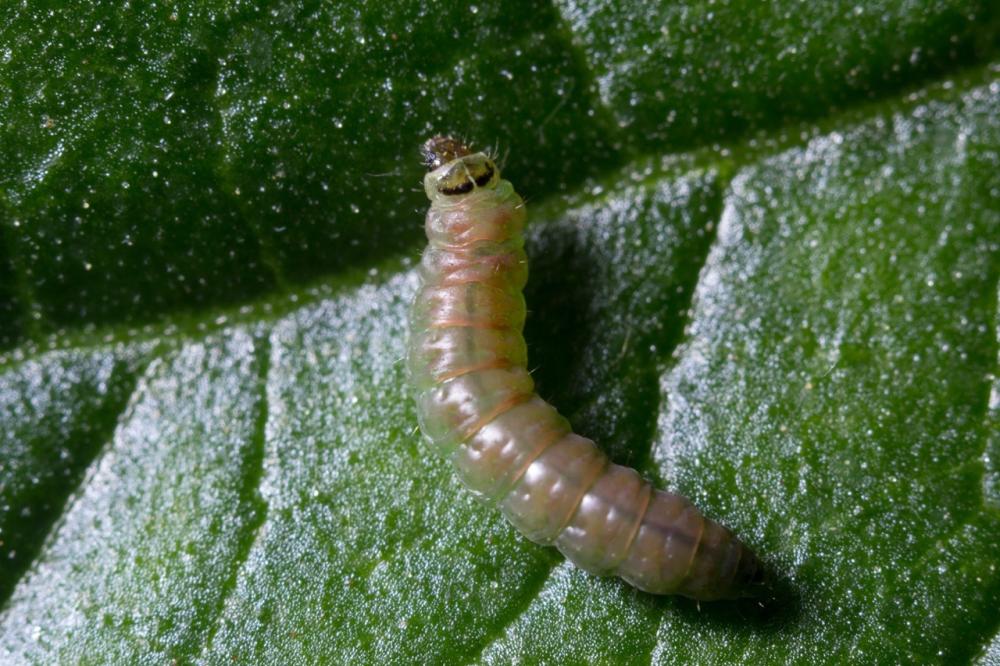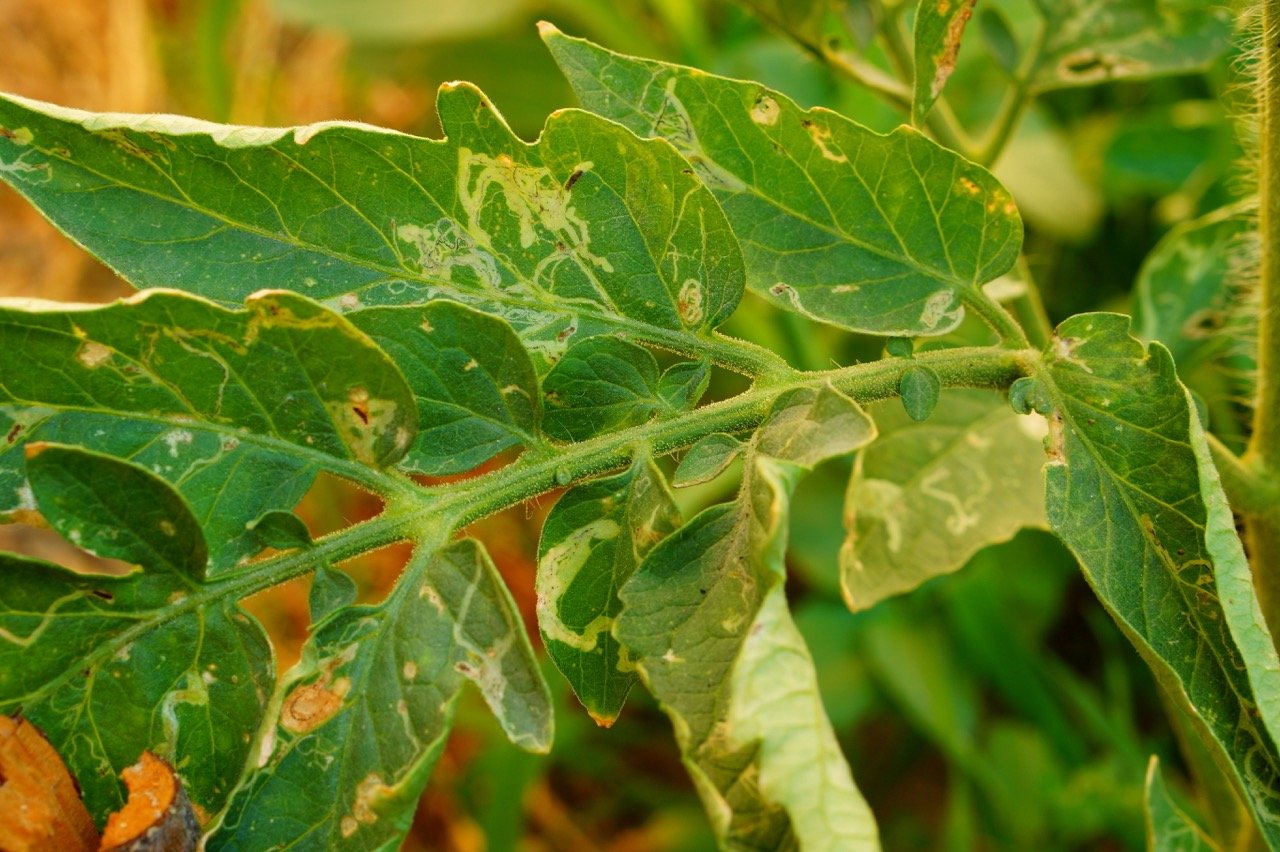
- Tuta absoluta, also known as the tomato leaf miner , is one of the most serious pests threatening tomato crops worldwide. It is a small (approximately 6–7 mm long), nocturnal moth that lays its eggs on leaves, fruits, and stems. The larvae that hatch from the eggs are the main cause of damage, feeding by tunneling into leaves and fruits, resulting in significant yield losses.
- The danger of this insect lies in its high reproductive capacity; it can produce more than 10–12 generations per year , and it can damage crops by a percentage that may exceed 80–100% if not controlled early.

Symptoms of Tuta absoluta infestation
- 🌱 The presence of oval or irregular tunnels inside tomato leaves.
- 🍂 Wilting and drying of infected leaves due to loss of the ability to photosynthesize.
- 🍅Perforated or deformed fruits, sometimes with larval remains inside.
- 🐛 Seeing small green or brown larvae inside the tunnels.
- 📉 A sharp decline in productivity due to damage to leaves and fruits.
Most affected crops
- 🍅 Tomatoes (the main and most affected crop).
- 🌶️ Pepper.
- 🍆 Eggplant.
- 🥔 Potatoes (to a lesser extent).
Tuta absoluta life cycle
- Eggs: Laid singly on the underside of leaves or fruits, hatch in 4–6 days.
- Larvae: They enter leaves and fruits to feed, forming distinctive tunnels. This stage lasts about 12–15 days.
- Pupa: The larva turns into the pupa stage either inside the soil or between the leaves, and lasts from 7–10 days.
- Adult: A small, gray-brown butterfly that is active at night and begins laying eggs again.
- ⏳ The complete cycle takes about 25–30 days in the summer, and as temperatures rise, it can accelerate and produce several overlapping generations.

Economic damages
- Direct losses of up to 80–100% in tomatoes when neglected.
- Declining fruit quality and deformity, which reduces its marketing value.
- High control costs due to the rapid reproduction of the pest.
- It is difficult to eliminate in the later stages because it lives inside the leaves and fruits.
Prevention methods
- 🌱 Remove crop residues and infected weeds immediately after harvest.
- 🪟 Use tight netting for greenhouses to prevent butterflies from entering.
- 🪰 Installing pheromone traps to monitor butterfly numbers and limit their reproduction.
- 🔄 Follow a crop rotation and avoid planting tomatoes continuously in the same land.
- 🌿 Collect and burn infected leaves and fruits to reduce sources of infection.
Active ingredients to combat Tuta absoluta
Specialized pesticides:
- Emamectin benzoate: 0.25–0.5 g per 1 liter of water – repeat every 7–10 days.
- Spinosad: 0.3–0.5 ml per 1 liter of water – repeated every 7–10 days.
- Spinitoram: 0.3–0.4 ml per 1 liter of water – repeated every 7–10 days.
- Chlorantraniliprole: 0.2–0.3 ml per 1 liter of water – repeat every 10 days.
- Indoxacarb: 0.3–0.5 g per 1 liter of water – repeated every 10 days.
Practical tips for farmers
- Start control as soon as you notice the first infestation or spot butterflies in the traps.
- Focus on young leaves and fruits as they are the primary target for caterpillars.
- Do not use the same active ingredient repeatedly, but alternate between them to avoid resistance.
- Combining pheromone traps with periodic spraying significantly reduces insect numbers.

